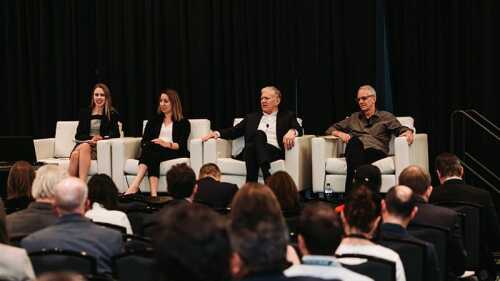Office
As shown by high-profile developments in metro areas like Austin and Dallas/Fort Worth, Texas is redefining the notion of the central business district (CBD), said the president and chief executive officer of the Texas Economic Development Corp. speaking at the ULI Texas Forum in Austin. Companies will maintain urban footprints, he said, but a number of major employers in the Austin area are expanding away from the downtown.
The commercial real estate sector must adjust to a trend in which corporate tenants increasingly see buildings as tools to recruit and retain talent and boost workforce productivity, panelists said at the ULI Spring Meeting in Nashville. Real estate developers need to focus on designing innovative, customized spaces and offering amenities that help their tenants meet their strategic goals concerning human capital.
The conversion to primarily open-office floor plans over the past decade is now reaching adolescence, and like many revolutions has created problems as well as possibilities, panelists said at a ULI New York event in February.
A number of cities in the U.S. Northeast are supplanting outdated office product with new thanks to strong, diversified economies; vigorous job creation; and increasing formation of businesses. Further driving development in the Northeast—New York, Massachusetts, Pennsylvania, and New Jersey—is continuing demand from the education and medicine (“eds and meds”) and technology sectors, among others.
Coworking reigns as a core strategy, rather than a craze, against the backdrop of commercial real estate evolving from a space-leasing business to a service-delivery business, said speakers at a ULI Houston luncheon in November.
The workplace of the future needs to provide flexibility and wellness in order to drive innovation, said a design expert giving a keynote at the 2018 ULI Japan Fall Conference in Tokyo.
The overall availability rate for U.S. office space was unchanged as of the end of the third quarter of 2018, remaining at 18.1 percent, according to the latest Savills Studley Report: National Office Sector from commercial services firm Savills Studley. San Francisco remains the tightest market in the country, with an availability rate of 9 percent, followed by Boston/Suffolk County, 9.7 percent; New York City, 11.6 percent; and Austin, 12.8 percent.
While America’s South continues on a steady course with a growing population and an increasing number of jobs, officials are acting on some challenges, which include traffic, housing affordability, education needs, and the rising cost of construction.
Hong Kong Central remained the most expensive office market in the world, according to CBRE’s annual Global Prime Office Occupancy Costsreport. Hong Kong Central’s overall prime occupancy costs of US$307 per square foot (US$3,305 per sq m) per year topped the “most expensive” list, followed by London’s West End, Beijing’s Finance Street, and Hong Kong’s Kowloon.
While commercial real estate investors generally take a positive view on coworking, maintaining a balance of traditional and coworking space in a building is critical when it comes to creating long-term capital value. According to a CBRE survey, investors say that a coworking occupancy of a third of the space or less, with a qualified operator, supports a healthy capital value.






